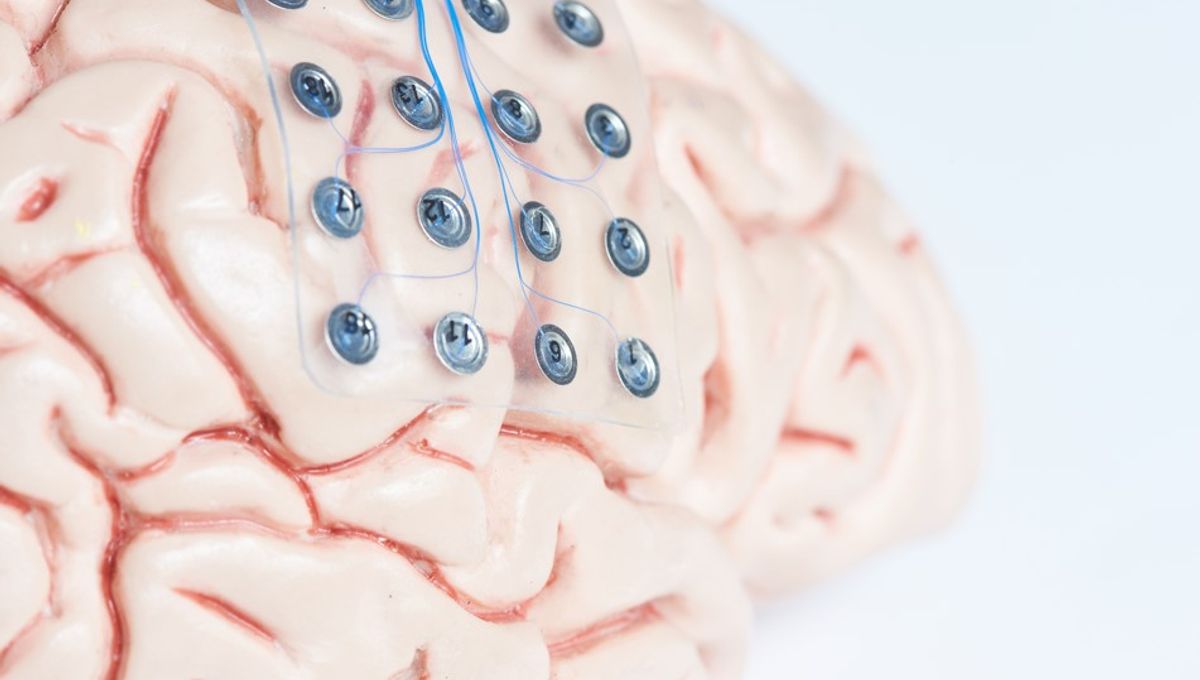
A 34-year-old woman in the US has become the first person to receive a brain implant that treats both epilepsy and obsessive compulsive disorder (OCD). Having been fitted with the device at Oregon Health and Science University in Portland, Amber Pearson says her incessant hand-washing and anxiety about contamination have now all but vanished.
Measuring 32 millimeters (about an inch) in length, the chip – known as a responsive neurostimulation system (RNS) – was originally offered to Pearson as a treatment for her epilepsy. Such implants are commonly used for the condition, and work by delivering a pulse that disrupts brain activity patterns associated with seizures.
Speaking to AFP, Pearson’s neurosurgeon Ahmed Raslan explained that “It was her idea to say, ‘well, you’re going into my brain and putting this wire, and I have OCD, so can you just put a wire for OCD?’.”
“And you know, luckily, we took that suggestion seriously.”
To configure the RNS, doctors recorded the brain activity patterns that arose when Pearson was exposed to seafood – a trigger that tends to set off her compulsions. They were then able to program the device to recognize and disrupt these signals, in addition to those linked to epileptic seizures.
“Usually we think of devices either for OCD or for epilepsy”, said Raslan. Pearson’s implant, however, is “the only device in the world that treats two conditions.”
“And it’s programmed independently. So the program for epilepsy is different than the program for OCD,” explained the neurosurgeon.
After being fitted with the device in March 2019, Pearson had to wait around eight months to start seeing noticeable results. However, at her final follow-up two-and-a-half years later, she told doctors that the RNS had transformed her life.
Tracking her progress over that period, the authors of a case report write that “she has had a life-changing improvement in her OCD symptoms.” For instance, they explain that she now spends no more than 30 minutes a day on “compulsions” like excessive hand-washing or checking that windows are closed – activities that used to rob her of more than eight hours a day.
The researchers state that Pearson in now “able to do things that she had previously deemed impossible, such as being able to sit next to someone eating something that previously would have triggered her contamination obsessions (e.g., seafood) and to leave the house without engaging in much of her previous checking routine, such that she is no longer late for work.”
“She has also resumed living independently for the first time in many years,” they write.
In a statement, Pearson herself explained that “OCD is worse than having the seizures.” Describing how she used to wash her hands until they bled, she says that “epilepsy brings limitations to my life, but OCD controlled it.”
However, thanks to the RNS, things have improved dramatically. “I’m actually present in my daily life and that’s incredible,” she told AFP. “Before, I was just constantly in my head worrying about my compulsions.”
The case report is published in the journal Neuron.
Source Link: First-Ever Brain Implant To Treat OCD And Epilepsy Proves "Life-Changing" For Patient